China smog: Beijing issues second ever pollution red alert
- Published
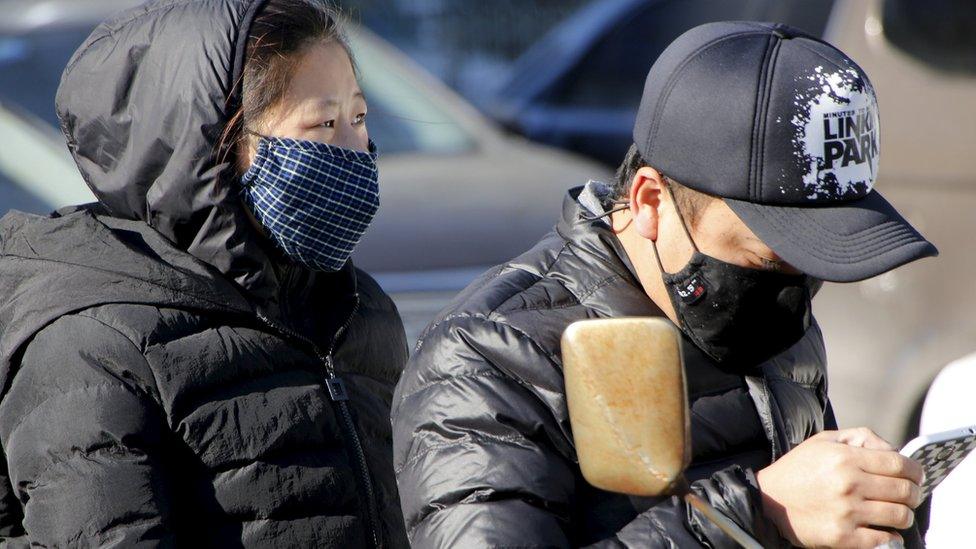
Beijing has issued a second pollution red alert, little more than a week after the first ever such warning.
The Chinese capital will see hazardous smog from Saturday until Tuesday, the official meteorological service said.
Nationwide, a vast area from Xian in central China to Harbin in the north-east would also be badly hit, the National Meteorological Centre said.
Beijing authorities have advised residents to avoid outdoor activity and for schools to stop classes.
The red alert - the highest of a four-level alert system instituted two years years ago - also triggers restrictions on vehicle use, factories and construction work.
The government has promised to take action to address often dangerous levels of pollution.

Jo Floto, BBC News, Beijing: "Off the scale"
On Friday the skies have been blue and pollution levels are very low for Beijing standards. But in the next few hours the winds are predicted to drop and pollution levels will steadily rise. If nothing is done, they will rise to hazardous levels - more probably to levels that are literally off the scale.
The government is coming under increasing pressure to deal with the problem. After truly atrocious smog at the end of November, with particulate pollution measured at almost 30 times the recommended level, there was much criticism that not enough was being done.
After the first red alert, they claimed to have reduced pollution by a third, they'll be hoping to do the same over the next few days. They'll also be watching the public mood.

Long-term exposure to high levels of dangerous particulate matter in smog - PM2.5 - has been linked to lung damage and respiratory illnesses.
The World Health Organization considers PM2.5 readings of 25 micrograms per cubic metre as the maximum safe level.
The smog which hit Beijing on 8 December peaked just below 300. Residents are encouraged to stay indoors if levels exceed that level.
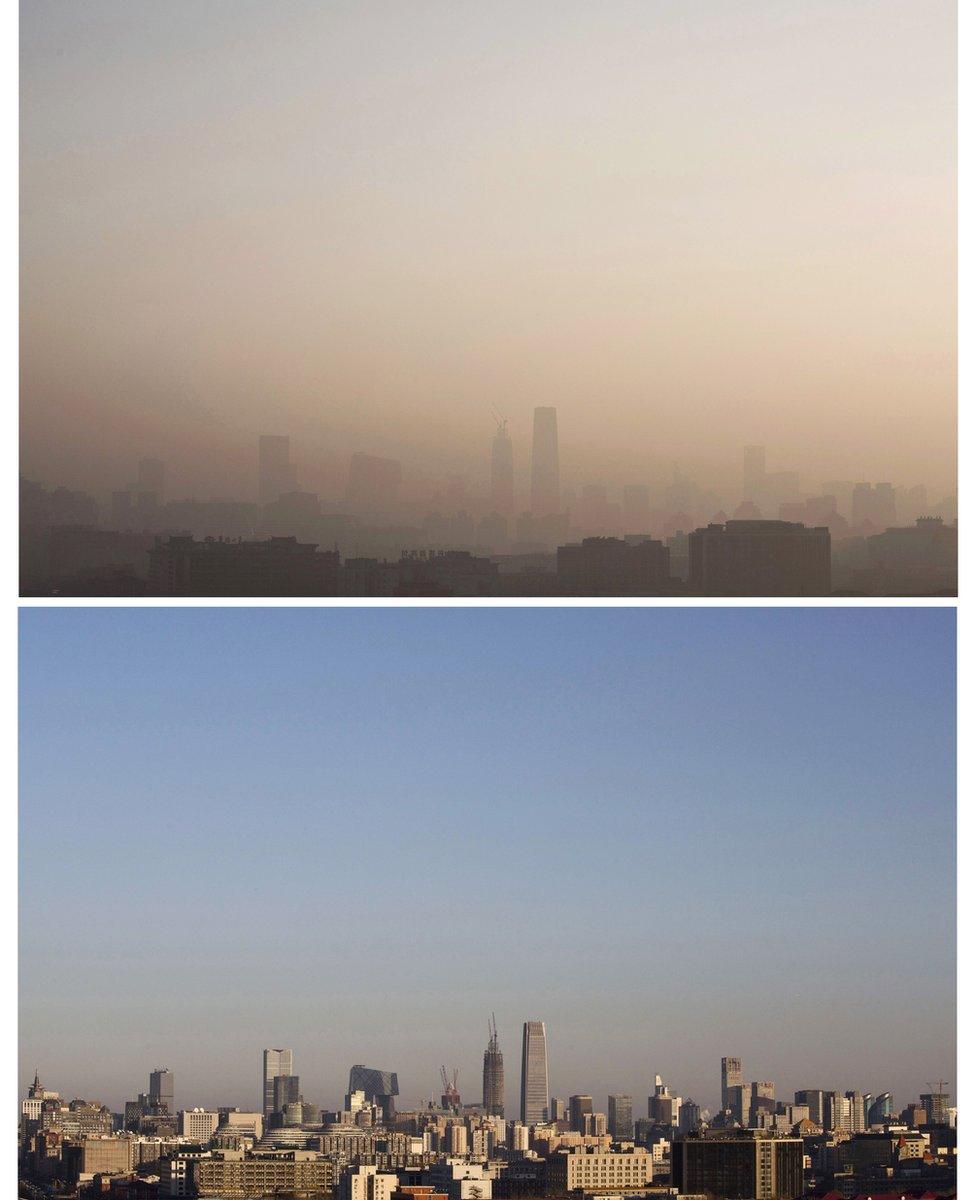
The smog of the last red alert cleared dramatically on 10 December
Meteorological authorities have said this time the smog is expected to exceed 500 micrograms per cubic metre.
Authorities released a map showing that smog would blanket a swathe of the country spanning nearly 2,000km (1,200 miles), encompassing at least 12 major cities, with Beijing and nearby city Shijiazhuang heaviest hit.

What are PM 2.5 particles?
Particulate matter, or PM, 2.5 is a type of pollution involving fine particles less than 2.5 microns (0.0025mm) in diameter
A second type, PM 10, is of coarser particles with a diameter of up to 10 microns
Some occur naturally - e.g. from dust storms and forest fires, others from human industrial processes
They often consist of fragments that are small enough to reach the lungs or, in the smallest cases, to cross into the bloodstream as well
A build-up of PM2.5 in the lungs has been associated with causing respiratory illnesses and lung damage

The news of the new red alert was greeted with exasperation and worry among Chinese citizens.
Beijing resident Cheng Xianke expressed concern for the health of the elderly and children. He told Reuters: "For us who commute to work it's not so bad but still I'm very concerned about the pollution. I think the government needs to put more effort into solving this."
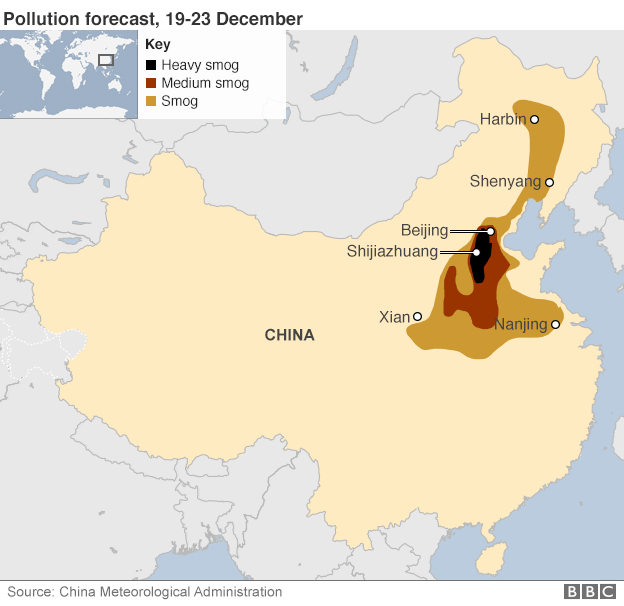
Another resident, Fan Xiaoting, told the news agency that the alert would affect school teaching timetables: "We are paying close attention as to whether stopping the classes will have further implications."
Coal-powered industries and heating systems - in heavy use during the cold Beijing winter - are major contributors to the smog.
It is made worse by weather conditions and the city's geography - it is bordered to the south and east by heavily polluting industrial areas, and to the north and west by mountains that trap the dirty air over the city.
China still depends on coal for more than 60% of its power, despite big investments in renewable energy sources.
Earlier this month China was part of the landmark Paris climate change agreement, that set a course for China, and the world, to move away from fossil fuels in the long term.

- Published7 December 2015
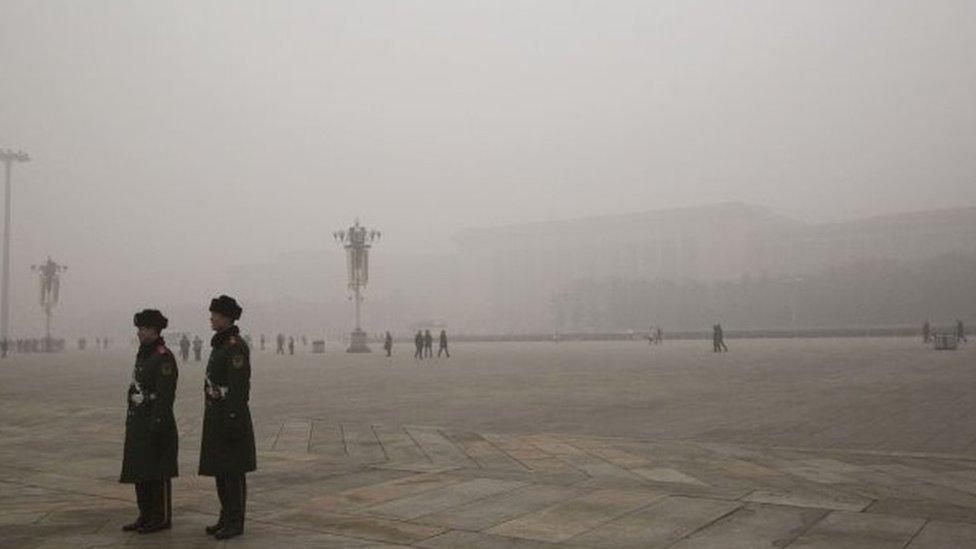
- Published11 December 2015
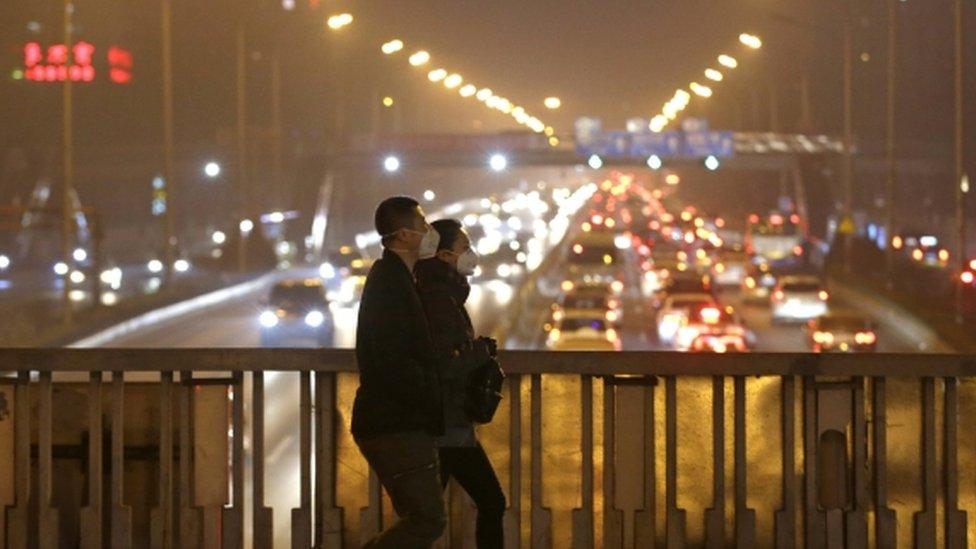
- Published1 December 2015
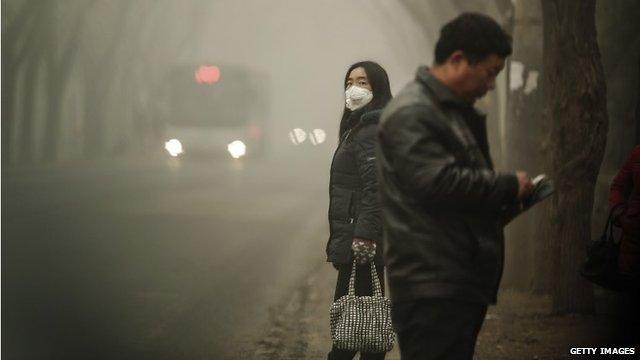
- Published3 February 2015

- Published2 March 2015
